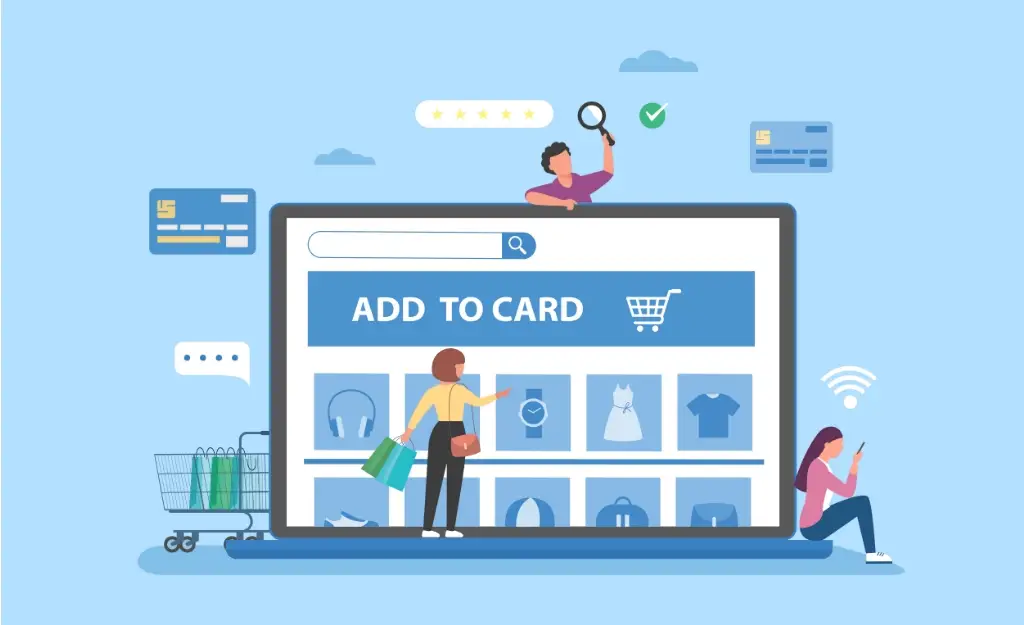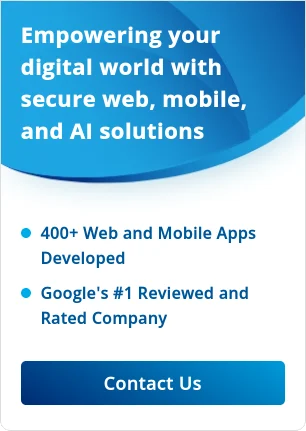
eCommerce website development: Overview of the topics covered in the guide
This guide will cover a wide range of topics related to eCommerce web development. It will begin by discussing the different platforms available for building an online store, and the pros and cons of each. It will then cover design and user experience and provide tips for creating a visually appealing and user-friendly website.
The guide will also cover strategies for increasing sales, such as conversion rate optimization and upselling and cross-selling techniques. It will also discuss marketing and promotion, including SEO, social media marketing, and email marketing.
Finally, the guide will cover mobile optimization, which is crucial for reaching customers who use mobile devices to shop online. It will provide best practices for designing mobile-friendly websites and product pages.
Overall, this guide is intended to provide a comprehensive overview of eCommerce web development and offer actionable advice for creating a successful online store.
Also Read: Custom eCommerce Development for Your Business: The Top Benefits
What is ecommerce website development?
The development of an e-commerce website usually begins with the creation of a design that is tailored to the business’s brand and target audience. The website is then built using a combination of programming languages, frameworks, and content management systems (CMS) to create the necessary functionality. The development process may also involve integrating third-party tools such as payment gateways, shipping providers, and inventory management systems.
E-commerce website development requires expertise in web development, user experience design, and online marketing. It’s important to create a website that is visually appealing and easy to use and to develop a marketing strategy that drives traffic to the site and encourages conversions. The development team must also ensure the website is secure and compliant with relevant regulations, such as data protection laws and payment card industry (PCI) standards.
Explanation of the importance of eCommerce website development
E-commerce web development is the process of designing, building, and maintaining an online store. It is an essential aspect of any business that wants to sell its products or services online. With the internet and mobile devices rising, e-commerce has become a vital component of the global economy.
It allows businesses of all sizes to reach customers around the world, 24/7.
A well-designed and optimized eCommerce website can help businesses increase their sales, improve customer engagement, and reduce operational costs. It can also provide valuable insights into customer behavior and preferences, which can be used to inform business decisions.
E-commerce web development is also essential for building a strong online brand. A professional-looking website can help establish trust and credibility with customers. It can also be used to communicate a business’s unique selling points and value proposition.
Choosing the Right eCommerce Development Platform
Comparison of popular eCommerce platforms (Shopify, Magento, etc.)
When it comes to building an online store, there are a variety of eCommerce platforms to choose from. Some popular options include Shopify, Magento, WooCommerce, and BigCommerce. Each platform has its own set of features, pros and cons, and pricing plans.
Shopify is a popular choice for small to medium-sized businesses. It is user-friendly and easy to set up and offers a wide range of plugins and themes. Magento, on the other hand, is a more robust platform that is well-suited for larger businesses and enterprise-level eCommerce. It offers more flexibility and customization options than Shopify but can be more complex to set up and manage.
WooCommerce is a free, open-source platform that is built on top of WordPress. It is a good option for businesses that want to create a custom-designed website and have more control over the code. BigCommerce is another popular platform that offers a wide range of features and customization options, making it ideal for businesses of all sizes.
1. Factors to consider when selecting a platform (scalability, customization, etc.)
When selecting an eCommerce platform, it’s important to consider several factors that will impact the success of your online store.
Some key factors to consider include scalability, customization, and ease of use.
Scalability refers to the ability of the platform to grow and adapt as your business expands. If you anticipate significant growth in the future, it may be wise to choose a platform that can accommodate that growth.
Customization options are also important to consider. Some platforms offer more flexibility in terms of design and functionality, while others are more limited. If you have a specific design or functionality requirements, you’ll want to choose a platform that can accommodate those needs.
Ease of use is another important factor to consider. If you’re not a technical expert, you’ll want to choose an easy platform to set up and manage. Platforms like Shopify are often recommended for non-technical users because of their user-friendly interface.

2. Tips for migrating from one platform to another
Migrating from one eCommerce platform to another can be a complex and time-consuming process, but it can also be a necessary step for some businesses. Whether you’re looking to move to a more robust platform, or you’re experiencing issues with your current platform, here are some tips to make the migration process as smooth as possible.
Plan ahead: Make sure you have a clear understanding of the reasons for migrating, the timeline for the migration, and the resources you’ll need to complete the process.
Backup your data: Before you begin the migration, it’s important to back up your data, including customer information, product listings, and order history.
Test the new platform: Before migrating all of your data, test the new platform to ensure that it can accommodate your needs and that the migration process will go smoothly.
Communicate with your customers: Keep your customers informed about the migration process and any potential disruptions to your online store.
Allow for additional time: Migrations can take longer than expected, so be sure to allow for additional time in your schedule to ensure that the process goes smoothly.
Consider hiring a professional: If you’re not comfortable with the migration process, consider hiring a professional to help with the transition.
Also Read: BigCommerce Development Services: The Key to E-commerce Success
E-commerce Website Development Process: Step by Step
Follow these step-by-step guidelines for e-commerce web development to maximize revenue from your website:
Design and User Experience
1. Importance of a visually appealing design
A visually appealing design is crucial for creating a positive user experience on your eCommerce website. A well-designed website can help establish trust and credibility with customers and can also be used to communicate a business’s unique selling points and value proposition.
A visually appealing design can also help to increase conversions by making it easy for customers to find the products they’re looking for, and to complete their purchase. A well-designed website can also help to reduce bounce rates by keeping customers engaged and interested in browsing your products.
2. Best practices for creating a user-friendly interface
Creating a user-friendly interface is key for ensuring that customers can easily navigate your website, find the products they’re looking for, and complete their purchases.
Some best practices for creating a user-friendly interface include:
Navigation: Make sure your website’s navigation is clear and easy to understand. Use intuitive labels and include a search function to make it easy for customers to find what they’re looking for.
Product listings: Make sure your product listings are well-organized, with clear product descriptions and high-quality images.
Checkout process: Make sure your checkout process is streamlined and easy to understand. Include clear instructions and error messages to help customers avoid common mistakes.
Responsive design: Make sure your website is responsive so that it looks and works well on different devices and screen sizes.
3. How to conduct user testing and gather feedback
User testing and feedback are important for identifying and resolving any issues with your website’s design and user experience.
Here are some steps for conducting user testing and gathering feedback:
Identify your target audience: Determine who your target audience is and what their needs and goals are when using your website.
Recruit participants: Recruit a diverse group of participants who represent your target audience, and who are willing to provide feedback on your website.
Set up the test: Set up the test by providing participants with specific tasks or scenarios to complete on your website. Observe their behavior and take note of any areas of difficulty or confusion.
Collect feedback: Collect feedback from participants through surveys, interviews, or online forms. Be sure to ask open-ended questions that will provide insight into their experience and any areas of improvement.
Analyze the data: Analyze the data you’ve collected and identify any patterns or common issues. Use this information to make changes and improvements to your website’s design and user experience.
Repeat the process: Repeat the user testing and feedback process periodically to ensure that your website continues to meet the needs and expectations of your target audience.
Optimizing for Sales
1. Techniques for increasing conversion rates
Conversion rate optimization (CRO) is the process of improving the performance of your eCommerce website by increasing the number of visitors who take a desired action.
2. Here are some techniques for increasing conversion rates:
A/B testing: A/B testing is a method of comparing two versions of a website to see which one performs better. You can use A/B testing to experiment with different headlines, images, and layout options to see which elements have the biggest impact on conversion rates.
Personalization: Personalization is the process of tailoring the user experience to the individual user. This can be done by using personalization software to display different content or offers based on the user’s browsing history or behavior.
Live chat: Live chat can be a powerful tool for increasing conversion rates by providing immediate assistance to customers who have questions or need help.
Customer reviews: Customer reviews can help increase trust and credibility, which can in turn lead to increased conversions.
3. Strategies for upselling and cross-selling
Upselling and cross-selling are strategies used to increase sales by encouraging customers to purchase additional or complementary products.
Upselling is the process of encouraging customers to purchase a more expensive or upgraded version of the product they are currently considering.
Cross-selling is the process of encouraging customers to purchase related or complementary products.
4. Tips for creating effective product listings and descriptions
Creating effective product listings and descriptions is crucial for maximizing sales on your eCommerce website.
Here are some tips for creating effective product listings and descriptions:
Use high-quality images: Use high-quality images that show the product from multiple angles and in different settings.
Write detailed and accurate descriptions: Provide clear and accurate descriptions of the product, including its features, benefits, and any relevant information that customers may need to know before making a purchase.
Use SEO best practices: Optimize your product listings and descriptions for search engines by including relevant keywords and meta tags.
Highlight unique selling points: Highlight any unique selling points or value propositions that set your products apart from the competition.
Show social proof: Include customer reviews, ratings, or any other social proof forms to help increase trust and credibility.
Be consistent: Use consistent formatting and language throughout all of your product listings and descriptions to help create a polished and professional appearance.
Use calls to action: Use calls to action such as “Buy now” or “Add to cart” to encourage customers to take the next step and make a purchase.
Be clear about shipping and return policy: Make sure to include shipping and return policy information in your product descriptions to help customers make an informed purchase
decision.

Marketing and Promotion
1. How to use SEO to drive traffic to your site
Search engine optimization (SEO) is optimizing your website to improve its visibility and ranking in search engine results pages (SERPs).
Here are some strategies for using SEO to drive traffic to your eCommerce site:
Keyword research: Conduct keyword research to identify the keywords and phrases that people are using to search for products or services related to your eCommerce site.
On-page optimization: Optimize the content and structure of your website to include the keywords you’ve identified and to improve user experience. This includes optimizing the website’s title tags, meta descriptions, and header tags.
Content marketing: Create and publish high-quality, informative, and relevant content that targets the keywords you’ve identified.
Backlink building: Build backlinks to your website from other high-quality and authoritative websites.
Track your progress: Use analytics tools to track your progress and adjust as needed.
Social media marketing is the process of using social media platforms to promote your eCommerce site.
Here are some best practices for social media marketing:
Identify your target audience: Identify the social media platforms where your target audience is most active and focus your efforts there.
Create a content strategy: Create a content strategy that includes a mix of product promotions, educational content, and engaging content that aligns with your target audience’s interests.
Use visuals: Use visuals, such as images and videos, to increase engagement and capture attention.
Engage with your audience: Respond to comments and messages and engage with your audience by asking questions and running polls or contests.
Track your progress: Use analytics tools to track your progress and adjust as needed.
3. How to use email marketing and other tactics to promote your store
Email marketing is a cost-effective way to promote your eCommerce site and increase sales.
Here are some strategies for using email marketing to promote your store:
Build your email list: Build an email list by including a signup form on your website, offering incentives for signing up, and integrating email capture into your checkout process.
Segment your list: Segment your email list by demographics, purchase history, and other relevant factors to ensure that your messages are targeted and relevant.
Personalize your messages: Personalize your messages by using the recipient’s name and other information you have about them to make the email feel more relevant and personal.
Optimize your subject lines: Write subject lines that are clear, concise, and attention-grabbing to increase open rates.
Use a clear call-to-action: Include a clear call-to-action in your email, such as “Shop now” or “Learn more,” to encourage recipients to take the next step and visit your eCommerce site.
A/B test: A/B tests different elements of your email campaigns, such as subject lines, headlines, and calls-to-action, to see which ones perform best.
Use other tactics: Use other tactics such as referral marketing, affiliate marketing, and influencer marketing to promote your store and reach new audiences.
Mobile Optimization
1. Importance of mobile optimization in eCommerce
Mobile optimization is critical for eCommerce success because more and more consumers are using their smartphones to browse and make purchases online. According to a study, mobile commerce sales are expected to reach $3.56 trillion by 2023. This means that if your eCommerce site is not optimized for mobile, you could be missing out on a significant portion of potential customers.
2. How to make your site mobile-friendly
Here are some strategies for making your e-commerce site mobile-friendly:
Use a responsive design: Use a responsive web design that automatically adjusts the layout and content of your website to fit the screen size of the device being used.
Reduce load time: Reduce the load time of your website by compressing images, using a content delivery network (CDN), and minimizing the use of heavy scripts or plugins.
Make it easy to navigate: Make it easy to navigate your site by using large, easy-to-tap buttons and links, and by organizing your content into clear categories.
Optimize for mobile search: Optimize your site for mobile search by including mobile-friendly tags in your HTML, such as “viewport” and “responsive design” tags.
Test your site: Test your site on various mobile devices and screen sizes to ensure that it looks and functions correctly.
3. Best practices for designing mobile-optimized product pages
Here are some best practices for designing mobile-optimized product pages:
Keep it simple: Keep the design of your product pages simple and easy to read, with a clear and easy-to-tap call-to-action.
Use high-quality images: Use high-quality images that are optimized for mobile devices and that showcase your products in the best light.
Include all relevant information: Include all relevant information about your products, such as pricing, shipping details, and any other relevant information that customers may need to know before making a purchase.
Optimize for speed: Optimize your product pages for speed by compressing images, using a content delivery network (CDN), and minimizing the use of heavy scripts or plugins.
Test your pages: Test your product pages on various mobile devices and screen sizes to ensure that they look and function correctly.
E-commerce Website Development for Your Company
BitCot is a leading web and app development company specializing in e-commerce website development. Our experienced developers and designers can create a custom e-commerce solution tailored to your company’s needs.
At BitCot, we follow industry best practices and use cutting-edge technologies to deliver high-quality e-commerce websites. Our team works closely with you to understand your business goals and requirements, ensuring that the final product meets your expectations.
If you’re interested in developing an e-commerce website for your company, please get in touch with us for a consultation and further discussion about your project requirements.
Conclusion
Summary of key takeaways
In this guide, we’ve covered the various aspects of eCommerce web development and provided tips and strategies for elevating your online store. Some key takeaways from this guide include the importance of choosing the right platform, the importance of a visually appealing design and user-friendly interface, techniques for increasing conversion rates, strategies for marketing and promotion, and the importance of mobile optimization.
Additional resources for eCommerce web development
Here are some additional resources that you can use to further your understanding of eCommerce web development:
Blogs and articles: There are many eCommerce-focused blogs and articles that provide tips, tricks, and best practices for building and growing an online store.
Books: There are many books available on eCommerce web development, covering topics such as platform selection, design, and marketing.
Online courses: There are a variety of online courses available that cover eCommerce web development, including those offered by popular eCommerce platforms and other educational websites.
Community forums and groups: Joining eCommerce community forums and groups, such as those on Facebook, can be a great way to connect with other online store owners and learn from their experiences.
Call to action for implementing the strategies discussed in the guide
Now that you’ve finished reading this guide, it’s time to take action and start implementing the strategies discussed. Take the time to evaluate your current eCommerce website, identify areas that need improvement, and create a plan for making those improvements.
Whether it’s choosing a new platform, revamping your design, or optimizing your marketing strategies, the key is to take action and start making changes that will help elevate your online store. Don’t be afraid to experiment and test different approaches to see what works best for your business.
Remember that eCommerce website development is an ongoing process, and as technology and consumer behavior evolve, so should your online store. Keep learning, stay up to date with the latest trends, and always strive to improve the user experience for your customers.











